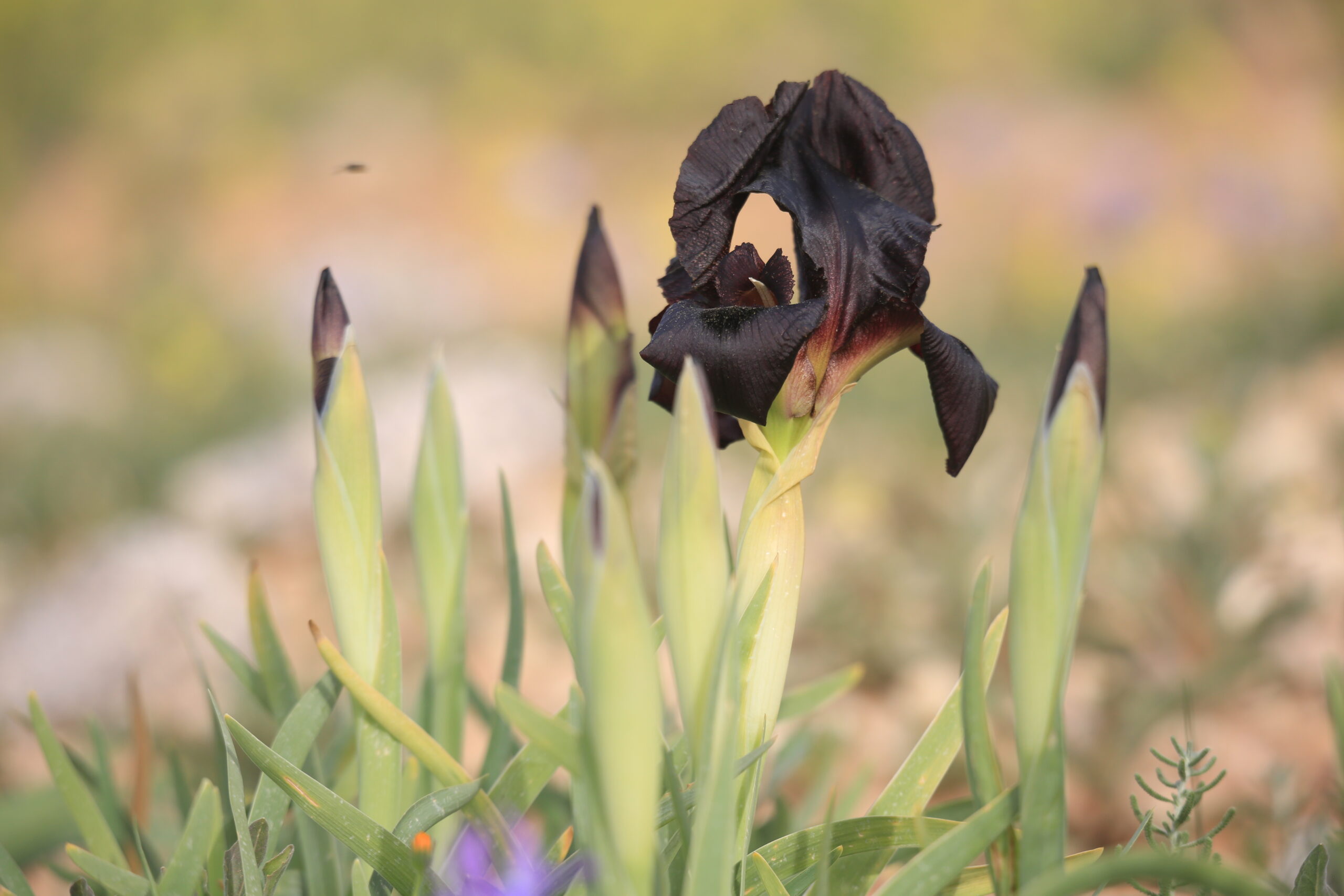WASHINGTON POST (22/4/2022)
Sitting beneath the branches of an ancient oak on a windswept hill in Jordan’s highlands during the first week of spring, I’m surrounded by a dazzling array of wildflowers. Purple anemones, red poppies, pink cyclamen, yellow and orange daisies. But one elegant flower stands out in the midst of all the bright blooms — because it’s completely black.
Mesmerized, I come closer to the lustrous dark petals, dropping to my knees to admire them. I had never seen a black flower in bloom before. Shining in the sun, three petals of the deepest black curve downward, and some patches look like velvet. They are extraordinarily beautiful.
“The black iris is Jordan’s national flower,” says Sawsan Oran, a professor of botany at the University of Jordan. “It’s an endemic species, and it’s a very special flower.” Her name, Sawsan, means “iris” in Arabic, and she was married for 40 years to Jordan’s leading expert in native flora, Dawud Al-Eisawi, who died of covid-19 in 2020.
“He was really in love with irises,” Oran says, her voice tinged with sadness. The flowers, she tells me, have adapted to a harsh environment and can be found on sun-parched hills, windy mountains and rocky cliffs, or at the edge of the desert. Her husband identified several species of irises with dark petals, from the fertile hills in the north to the dry lands and rugged mountains in the south. Although most people refer to them collectively as black irises, only one species, Iris nigricans, is the country’s national flower.
Since it was adopted as the national flower in 1999, the name and image of the black iris have appeared in restaurants, cafes and hotels all over the kingdom. The flower is a great symbol of Jordan — of elegance, beauty and delicacy in a harsh, challenging environment. It captures the essence of the country, demonstrating that astonishing things can flourish even in the roughest of places.
But the flower blooms for only a few weeks in spring, and the short seasonal life means the real thing is hard to find. Intensive urbanization, plowing, overgrazing and climate change have made the flower more vulnerable and increasingly difficult to spot in the wild. In 2014, it was listed as endangered.
Fascinated by the black iris, I joined photographer Mohammad Asfour on a quest to find it. Mohammad has spent years exploring Jordan’s diverse wildlife and natural beauty, including the oak and pine forests in the north and the arid landscapes of Wadi Rum and Petra in the south. As spring began, we hit the road in search of black in bloom (…)
Read more: https://www.washingtonpost.com/travel/2022/04/22/jordan-black-iris/
Photos by Mohammad Asfour
